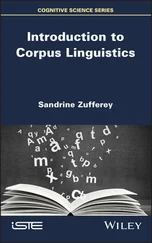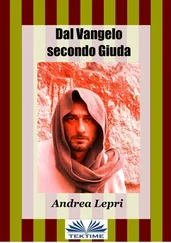acquisition program, to borrow a computer software metaphor) within the
human brain. This provides children with a genetically transmitted set of procedures for developing a grammar which enables them to produce and understand
sentences in the language they are acquiring on the basis of their linguistic experience (i.e. on the basis of the speech input they receive). The way in which Chomsky visualises the acquisition process can be represented schematically as in
(13) below (where L is the language being acquired):
(13)
experience
language
grammar
of L
faculty
of L
Children acquiring a language will observe people around them using the
language, and the set of expressions in the language which the child hears (and the contexts in which they are used) in the course of acquiring the language constitute the child’s linguistic experience of the language. This experience serves as input to the child’s language faculty, which provides the child with a set of procedures for analysing the experience in such a way as to devise a grammar of the language being acquired. Chomsky’s hypothesis that the course of language acquisition is determined by an innate language faculty is known popularly as the innateness hypothesis.
Invocation of an innate language faculty becoming available to the child only at some genetically determined point may constitute a plausible approach to the questions of uniformity and rapidity, but there is an additional observation which suggests that some version of the innateness hypothesis must be correct. This is that the knowledge of a language represented by an adult grammar appears to go beyond anything supplied by the child’s linguistic experience. A simple demonstration of this is provided by the fact that adult native speakers are not only capable of combining words and phrases in acceptable ways but also of recognising unacceptable combinations (see 5b above and exercise 1). The interesting question this raises is: where does this ability come from? An obvious answer to this question is: that the child’s linguistic experience provides information on unacceptable combinations of words and phrases. But this is incorrect. Why do we assert this with such confidence?
Obviously, when people speak, they do make mistakes (although research has
shown that language addressed to children is almost completely free of such
mistakes). However, when this happens, there is no clear signal to the child indicating that an adult utterance contains a mistake, that is, as far as the child is
8
linguistics
concerned, an utterance containing a mistake is just another piece of linguistic experience to be treated on a par with error-free utterances. Furthermore, it has been shown that adults’ ‘corrections’ of children’s own speech do not take
systematic account of whether children are producing syntactically acceptable or unacceptable combinations of words and phrases; parents do ‘correct’ their children, but when they do this, it is to ensure that children speak truthfully; grammatical correctness is not their target. Overall, there is compelling evidence that children do not receive systematic exposure to information about unacceptable sequences, and it follows that in this respect the child’s linguistic experience is not sufficient to justify the adult grammar. From this poverty of the stimulus argument it follows that something must supplement linguistic experience and the innate language faculty fulfils this role (exercise 5).
Now, it is important to underline the fact that children have the ability to acquire any natural language, given appropriate experience of the language: for example, a British child born of monolingual English-speaking parents and brought up
by monolingual Japanese-speaking parents in a Japanese-speaking community
will acquire Japanese as a native language. From this it follows that the contents of the language faculty must not be specific to any one human language: if the language faculty accounts for the uniformity and rapidity of the acquisition of English, it must also account for the uniformity and rapidity of the acquisition of Japanese, Russian, Swahili, etc.; and if the language faculty makes up for the insufficiency of a child’s experience of English in acquiring a grammar of English, it must also make up for the insufficiency of a child’s experience of Japanese in acquiring a grammar of Japanese, for the insufficiency of a child’s experience of Russian in acquiring a grammar of Russian, for the insufficiency of a child’s experience of Swahili in acquiring a grammar of Swahili, etc. This entails, then, that the language faculty must incorporate a set of UG principles (i.e. principles of Universal Grammar) which enable the child to form and interpret sentences in any natural language. Thus, we see an important convergence of the interests of the linguist and the developmental linguist, with the former seeking to formulate UG principles on the basis of the detailed study of the grammars of adult
languages and the latter aiming to uncover such principles by examining children’s grammars and the conditions under which they emerge.
In the previous paragraph, we have preceded ‘language’ with the modifier
‘human’, and genetic transmission suggests that a similar modifier is appropriate for ‘language faculty’. The language faculty is species-specific and the ability to develop a grammar of a language is unique to human beings. This ability
distinguishes us from even our nearest primate cousins, the great apes such as chimpanzees and gorillas, and in studying it we are therefore focusing attention on one of the defining characteristics of what it means to be a human being. There have been numerous attempts to teach language to other species, and success in this area would seriously challenge the assertion we have just made. Indeed, it has proved possible to teach chimpanzees a number of signs similar to those employed in the Sign Languages used as native languages by the deaf, and it has been
Introduction
9
reported that pigmy chimpanzees can understand some words of spoken English, and even follow a number of simple commands. Such research arouses strong
emotions, and, of course, we are not in a position to assert that it will never produce dramatic results. At the moment, however, we can maintain that all
attempts, however intensive, to teach grammatical knowledge to apes have been spectacular failures when the apes’ accomplishments are set alongside those of a normal three-year-old child. As things stand, the evidence is firmly in favour of the species-specificity of the language faculty.
Psycholinguistics
As noted above, the psycholinguist addresses the question of how
the mentally represented grammar (linguistic competence) is employed in the
production and comprehension of speech (linguistic performance). The most
direct way to approach this relationship is to adopt the hypothesis that a generative grammar can simply be regarded as itself providing an account of how we
understand and produce sentences in real time. From the point of view of language comprehension, this gives rise to the following (highly simplified) model,
where the input is a stretch of spoken or written language such as a particular sentence:
(14)
phonological
lexical
syntactic
semantic
input
output
processor
processor
processor
processor
In terms of this rather crude model, the first step in language comprehension is to use the phonological processor to identify the sounds (or written symbols)
occurring in the input. Then, the lexical processor identifies the component words. The next step is for the syntactic processor (also called the parser, and incorporating the syntactic component of the grammar) to provide a syntactic representation of the sentence (i.e. a representation of how the sentence is structured out of phrases and the phrases out of words). The last step is for the semantic processor to compute a meaning representation for the sentence, on the basis of the syntactic and lexical information supplied by earlier stages in the process. The relevant meaning representation serves as the output of the model: once this has been computed, we have understood the sentence.
Читать дальше
![Andrew Radford Linguistics An Introduction [Second Edition] обложка книги](/books/397851/andrew-radford-linguistics-an-introduction-second-cover.webp)











